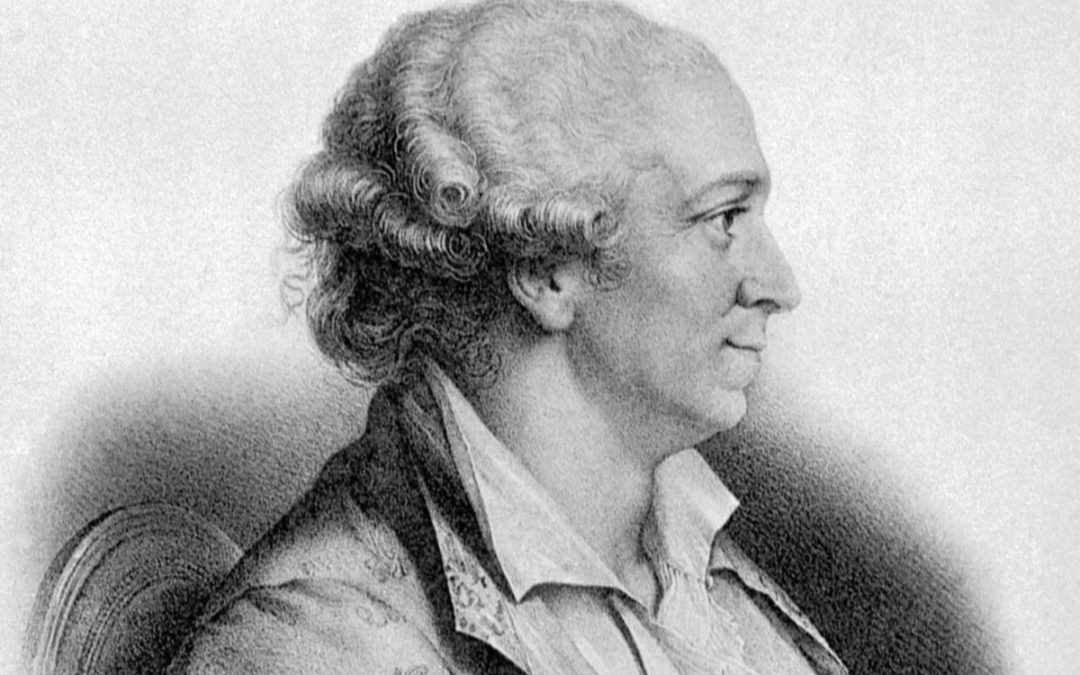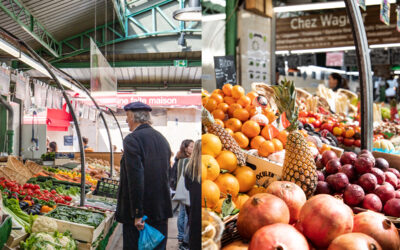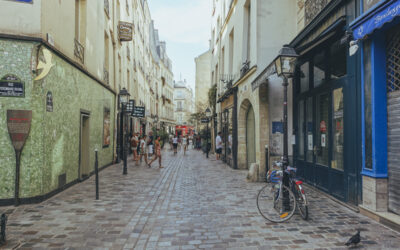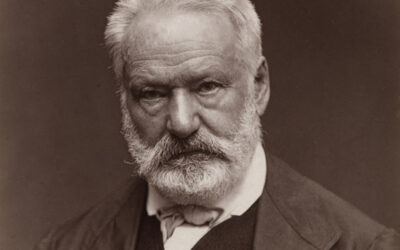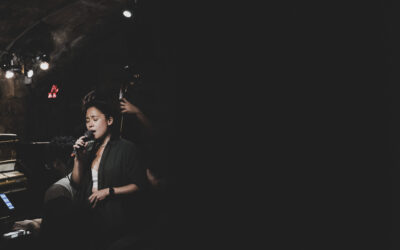Portrait of Pierre-Augustin Caron de Beaumarchais
On January 13, 1791, under the Revolution, a law appeared which decreed the freedom of theaters: anyone could now open a performance hall in France and perform the plays of their choice – something unthinkable under the Monarchy.
In the Marais, the news was greeted with enthusiasm by a few enlightened “theater people”, including Beaumarchais, the illustrious author of The Barber of Seville. Beaumarchais is a “celebrity” in the neighborhood: he has lived there for a long time and, shortly before the Revolution, even had his extraordinary residence built, unfortunately no longer there, along the boulevard which now bears his name.
The six actor-authors, headed by Langlois de Courcelles, a “defector” from the Comédie-Italienne, set their sights on land located rue de Sévigné (near number 11). They acquired part of the former property of the Poulletier family, confiscated during the Revolution and, on the site, asked the architect Guillaume Trepsat, a student of Blondel, to build a theater that could accommodate up to 1500 spectators.
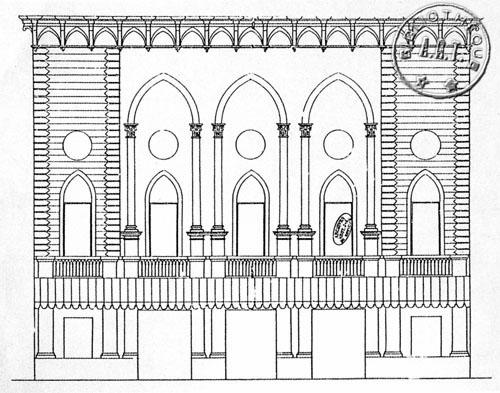
Facade of the Beaumarchais theater, ©Archives Nationales
The project is launched, financed by Beaumarchais, main sponsor. Construction was rapid: a few months after the promulgation of the law, the building was completed – for the record, stones from the Bastille were reused here.
The building built by Trepsat obeys the fashions of the time: inside, a large Italian-style room, with parterre, bathtubs and balconies, welcomes the public; outside, a white facade of classical inspiration, with antique pilasters and columns, marks the building from afar. Trepsat, however, knows how to be original: he gives his windows and their railings an ogival shape, called “cathedral”, borrowed from the Middle Ages.
On the day of the inauguration, August 31, it was Piron's Métromania which “opened the ball”. Subsequently, Beaumarchais regularly performed several of his works there. He also created La Mère Guilty there in August 1792.
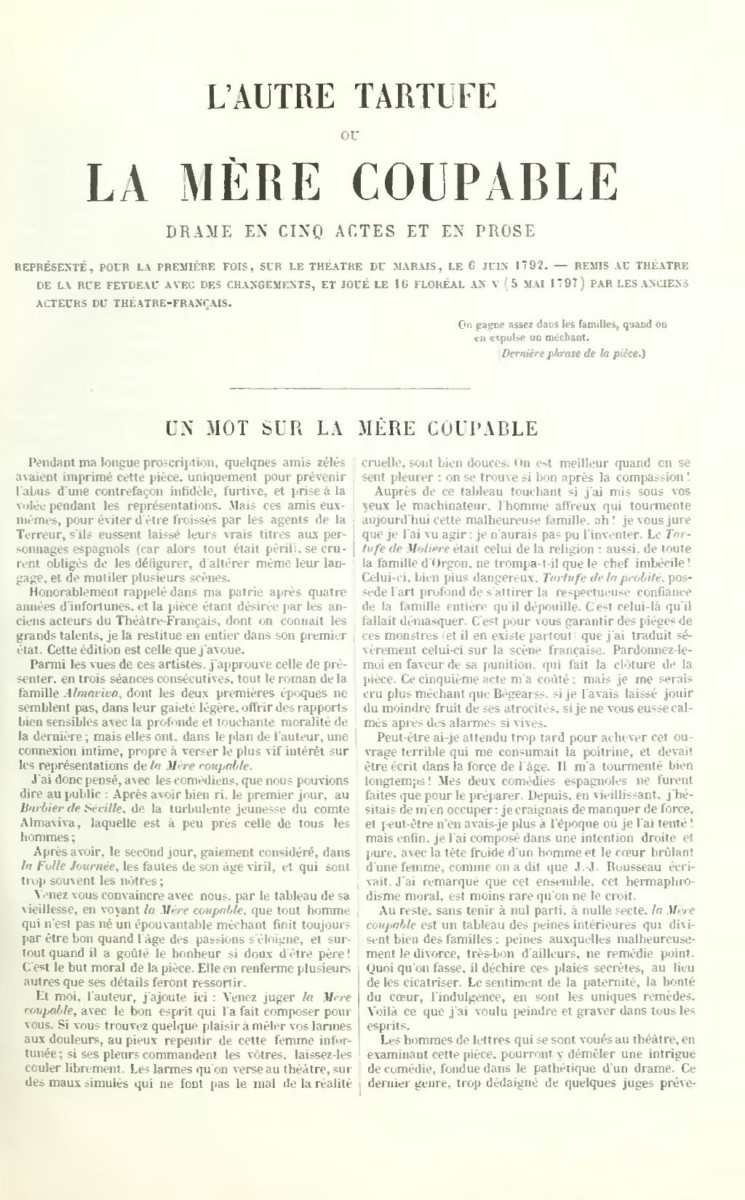
Somehow, the “Théâtre du Marais” survived the Revolution. It is the Empire that causes its fall. In 1807, Napoleon restored the old order: except for eight “official” performance halls, all Parisian theaters were closed. 11 rue de Sévigné then became an annex of the Société des Pompes funèbres, which already occupied the adjacent building (the current fire station), then a bathing establishment, mentioned by Hugo in Les Misérables. The Italian-style room has since been destroyed; only the facade remains in place, although much altered, as we can still see it today.
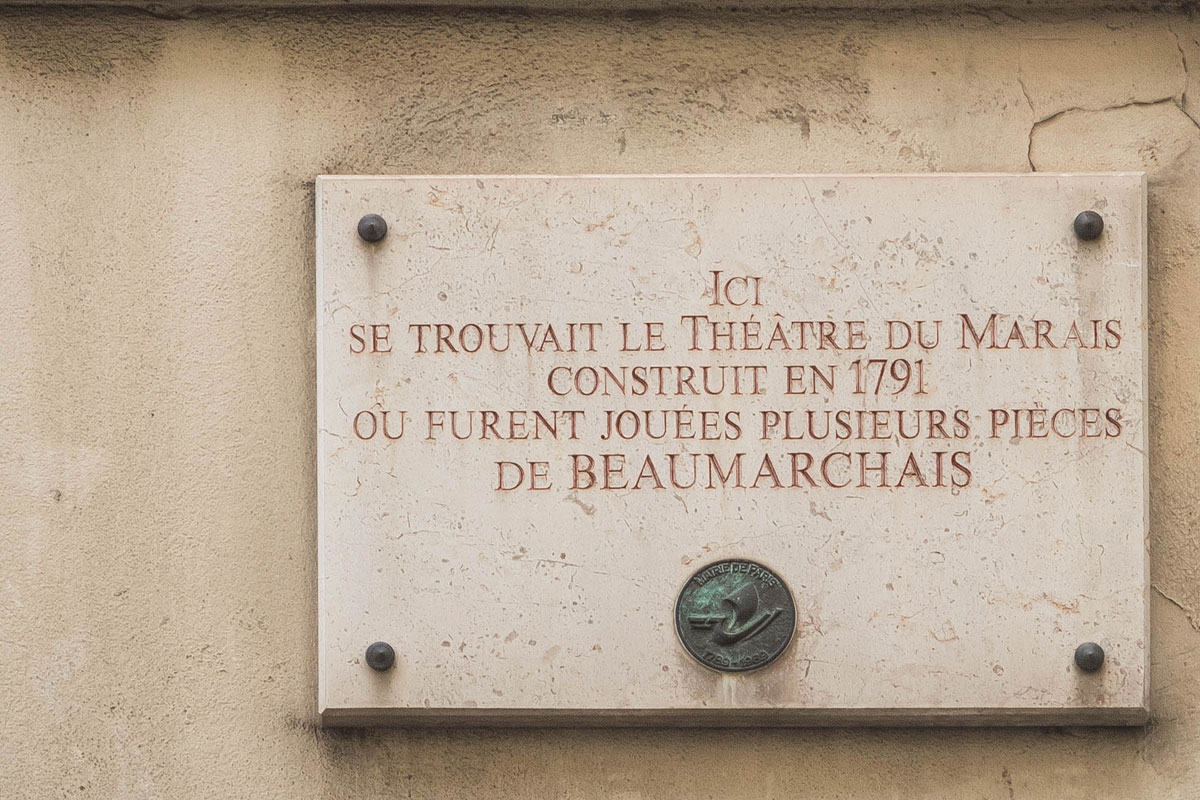
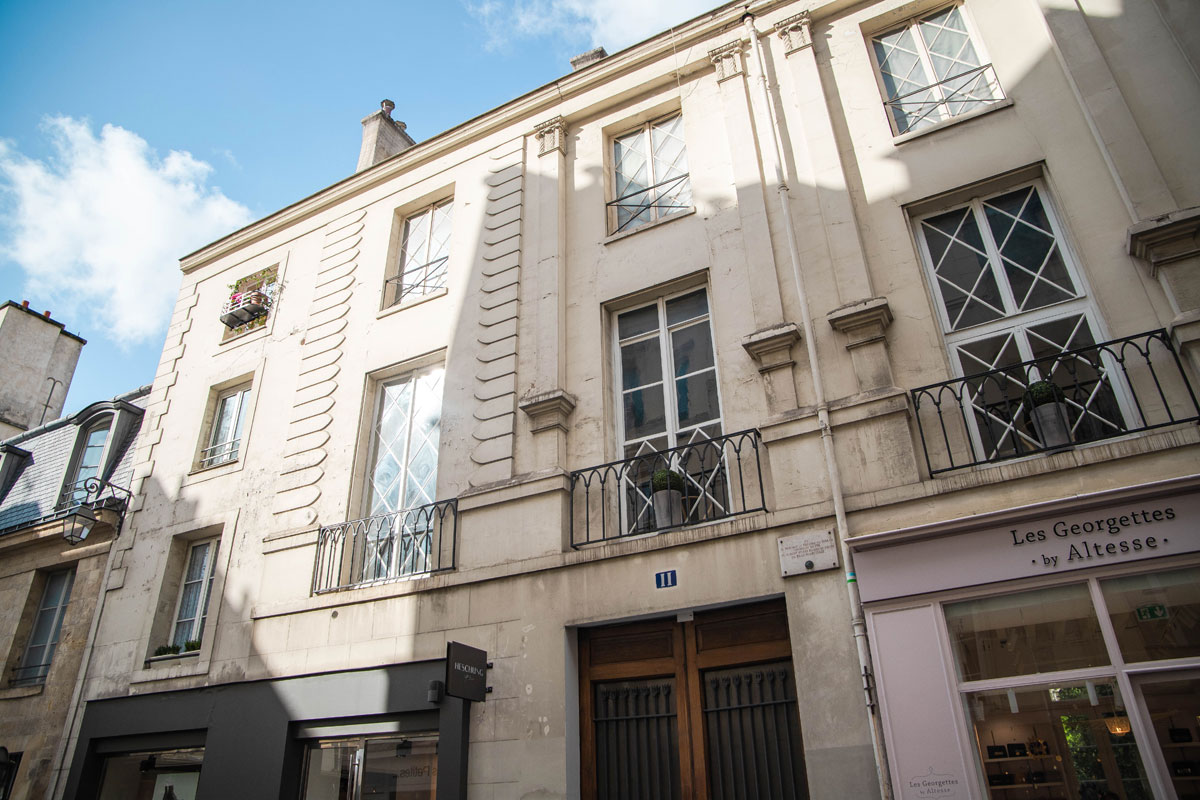
FOR PASSIONATES OFUS
The Enfants Rouges market, everyone loves it
Restaurants. Merchants (fruit and vegetables, cheese, fish, flowers, etc.). And a photo store. All backed by Comme un roman, one of the most beautiful Parisian bookstores, on rue de Bretagne. In short, food for the body and...
The Marais Jewish quarter in Paris
From the 13th century, the Marais was home to a Jewish community which remained there until its expulsion in the 14th century. Fleeing poverty and persecution, Jews from Eastern countries and those from Alsace settled there in the 19th century. Around rue des rosiers and Place Saint-Paul renamed Pletz…
Victor Hugo, the writer with a thousand talents
Born in 1802, Victor Hugo became a social writer, a playwright, a poet, a novelist and a romantic designer. Nicknamed the man-ocean then the man-century, he is a political figure and a committed intellectual. He found success with Notre-Dame-de-Paris in 1831 and with Les Misérables in 1862.
NOW ON THE MOOD MARSH
Jazz at 38Riv: The highlights of May
The only jazz club in the Marais, 38Riv is the temple of cool and swing. Rue de Rivoli, between Saint-Paul and Hôtel de Ville, its vaulted cellars are the home base of the new jazz scene. Every evening, the magic happens.
The Enfants Rouges market, everyone loves it
Restaurants. Merchants (fruit and vegetables, cheese, fish, flowers, etc.). And a photo store. All backed by Comme un roman, one of the most beautiful Parisian bookstores, on rue de Bretagne. In short, food for the body and...
The Marais Jewish quarter in Paris
From the 13th century, the Marais was home to a Jewish community which remained there until its expulsion in the 14th century. Fleeing poverty and persecution, Jews from Eastern countries and those from Alsace settled there in the 19th century. Around rue des rosiers and Place Saint-Paul renamed Pletz…

